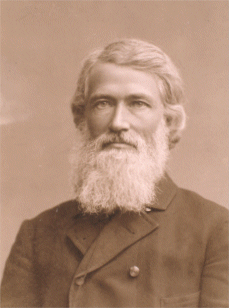Combinationalism: Difference between revisions
No edit summary |
No edit summary |
||
| Line 2: | Line 2: | ||
{{WIP}} | {{WIP}} | ||
[[File:Sars Johan Ernst.gif|thumb|[[Waldrich|Waldish]] philosopher [[Knut Arvidsen]] is widely credited with coining the term "combinationalism".]] | [[File:Sars Johan Ernst.gif|thumb|[[Waldrich|Waldish]] philosopher [[Knut Arvidsen]] is widely credited with coining the term "combinationalism".]] | ||
'''Combinationalism''' is a {{wp|political philosophy|political}} and {{wp|economic ideology|economic}} {{wp|ideology}} that rose to prominence in the [[Northern world (Teleon)|Northern world]] during the early 20th century. Combinationalism is based around the [[Dual mandate principal|dual mandate principal]], which claims that the purpose of the state is to maximize {{wp|Liberty|individual liberty}} while also ensuring {{wp|Pareto efficiency|Pareto efficient}} societal outcomes. Combinationalists argue that the dual mandate obligates policymakers to seek out the least intrusive and most efficient means of solving socio-economic issues, and to avoid intervention altogether when possible. Adherents of the movement are diverse in their views, but generally support {{wp|Limited government|limited government}}, {{wp|Right to property|property rights}}, {{wp|Subsidiarity|subsidiarity}}, [[Public stewardship|public stewardship]], {{wp|Individual and group rights|individual rights}}, {{wp|Optimal tax|optimal taxation}}, {{wp|Market monetarism|market monetarism}}, and {{wp|Welfare reform|welfare reform}}. | '''Combinationalism''' is a {{wp|political philosophy|political}} and {{wp|economic ideology|economic}} {{wp|ideology}} that rose to prominence in the [[Northern world (Teleon)|Northern world]] during the early 20th century. Combinationalism is based around the [[Dual mandate principal|dual mandate principal]], which claims that the purpose of the state is to maximize {{wp|Liberty|individual liberty}} while also ensuring {{wp|Pareto efficiency|Pareto efficient}} societal outcomes. Combinationalists argue that the dual mandate obligates policymakers to seek out the least intrusive and most efficient means of solving socio-economic issues, and to avoid intervention altogether when possible. Adherents of the movement are diverse in their views, but generally support {{wp|Limited government|limited government}}, {{wp|Right to property|property rights}}, {{wp|Subsidiarity|subsidiarity}}, [[Public stewardship|public stewardship]], {{wp|Individual and group rights|individual rights}}, {{wp|Optimal tax|optimal taxation}}, {{wp|Market monetarism|market monetarism}}, {{wp|Social justice|social justice}}, and {{wp|Welfare reform|welfare reform}}. | ||
The term “combinationalism” was coined by [[Waldrich|Waldish]] philosopher [[Knut Arvidsen]] in his 1887 essay ''[[ | The term “combinationalism” was coined by [[Waldrich|Waldish]] philosopher [[Knut Arvidsen]] in his 1887 essay ''[[Free Markets and Social Justice]]'', which is widely considered to be the foundational document of the ideology. After the [[Recession of 1924]], combinationalist movements entered the political mainstream in several countries in [[TBA]] as a {{wp|Center-right politics|center-right}} response to the {{wp|Social question|social question}}. [[TBA]] became the first nation with an openly combinationalist government in 1930, when [[TBA]] and his [[TBA Party]] rose to power in the aftermath of the [[TBA]]. Combinationalism spread to [[Calesia]] after the [[Great War (Teleon)|Great War]], when it was embraced by agrarian parties in order to encourage an equitable reconstruction of the war-torn continent. Waldish [[Lawspeaker of Waldrich|Lawspeaker]] [[Karl Fjellheim]] was an early proponent of Calesian combinationalism, enacting a series of economic and social reforms during the 1940s that became known internationally as the [[Waldish model]]. | ||
Political scientists generally categorize combinationalism as a {{wp|Center-right politics|center-right}} ideology, occupying a middle ground between {{wp|Market intervention|interventionist}} {{wp|Ordoliberalism|ordoliberalism}} and ''{{wp|Laissez-faire|laissez-faire}}'' {{wp|Classical liberalism|classical liberalism}}. However, combinationalism remains difficult to define due to the significant ideological diversity between different movements, and is sometimes associated more with the political {{wp|Centrism|center}}. As a result, combinationalism has often been referred to as a “big-tent” ideology unified only by adherence to the dual mandate principal. | Political scientists generally categorize combinationalism as a {{wp|Center-right politics|center-right}} ideology, occupying a middle ground between {{wp|Market intervention|interventionist}} {{wp|Ordoliberalism|ordoliberalism}} and ''{{wp|Laissez-faire|laissez-faire}}'' {{wp|Classical liberalism|classical liberalism}}. However, combinationalism remains difficult to define due to the significant ideological diversity between different movements, and is sometimes associated more with the political {{wp|Centrism|center}}. As a result, combinationalism has often been referred to as a “big-tent” ideology unified only by adherence to the dual mandate principal. | ||
Revision as of 23:43, 19 November 2024
This article is incomplete because it is pending further input from participants, or it is a work-in-progress by one author. Please comment on this article's talk page to share your input, comments and questions. Note: To contribute to this article, you may need to seek help from the author(s) of this page. |
Combinationalism is a political and economic ideology that rose to prominence in the Northern world during the early 20th century. Combinationalism is based around the dual mandate principal, which claims that the purpose of the state is to maximize individual liberty while also ensuring Pareto efficient societal outcomes. Combinationalists argue that the dual mandate obligates policymakers to seek out the least intrusive and most efficient means of solving socio-economic issues, and to avoid intervention altogether when possible. Adherents of the movement are diverse in their views, but generally support limited government, property rights, subsidiarity, public stewardship, individual rights, optimal taxation, market monetarism, social justice, and welfare reform.
The term “combinationalism” was coined by Waldish philosopher Knut Arvidsen in his 1887 essay Free Markets and Social Justice, which is widely considered to be the foundational document of the ideology. After the Recession of 1924, combinationalist movements entered the political mainstream in several countries in TBA as a center-right response to the social question. TBA became the first nation with an openly combinationalist government in 1930, when TBA and his TBA Party rose to power in the aftermath of the TBA. Combinationalism spread to Calesia after the Great War, when it was embraced by agrarian parties in order to encourage an equitable reconstruction of the war-torn continent. Waldish Lawspeaker Karl Fjellheim was an early proponent of Calesian combinationalism, enacting a series of economic and social reforms during the 1940s that became known internationally as the Waldish model.
Political scientists generally categorize combinationalism as a center-right ideology, occupying a middle ground between interventionist ordoliberalism and laissez-faire classical liberalism. However, combinationalism remains difficult to define due to the significant ideological diversity between different movements, and is sometimes associated more with the political center. As a result, combinationalism has often been referred to as a “big-tent” ideology unified only by adherence to the dual mandate principal.
